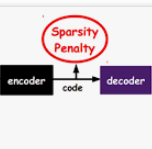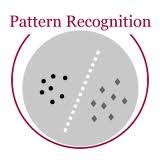项目名称: 基于L21范数约束的非负矩阵分解模型及其拓展
项目编号: No.61462064
项目类型: 地区科学基金项目
立项/批准年度: 2015
项目学科: 其他
项目作者: 万鸣华
作者单位: 南昌航空大学
项目金额: 45万元
中文摘要: 基于L21范数的稀疏矩阵分解理论与方法已逐渐成为当前计算机视觉和模式识别领域的研究热点问题之一。由于该理论与方法尚处于初始阶段,现有的基于L21范数的稀疏矩阵分解算法在数据鉴别能力、流形性和非负性存在理论与应用层面上的局限性。为进一步提升算法的鲁棒性、可解释性,我们引入最近提出的L21范数学习理论与方法,进而把子空间学习、流形学习和非负矩阵分解的特征提取理论与方法拓展到L21范数学习中。研究内容包括(1)基于L21范数约束的非负矩阵分解模型;(2)具有鉴别性L21范数约束的非负矩阵分解模型;(3)具有流形性L21范数约束的非负矩阵分解模型;(4)具有鉴别性、流形性L21范数约束的非负矩阵分解模型等新思想,拟进一步开展基于L21范数的稀疏矩阵分解模型研究理论与方法研究。开展本项目的研究将不断完善子空间学习、流形学习和非负矩阵分解特征提取理论体系, 提高计算机的鲁棒特征提取、理解与鉴别能力。
中文关键词: 稀疏表示;特征提取;模式分类;流形学习;计算机视觉
英文摘要: L21 norm based sparse matrix decomposition theory and methods have gradually become hot spots in the areas of computer vision and pattern recognition research. As the theory and method is still in the initial stage, the existing L21 norm based sparse matrix decomposition algorithm limitations on the ability to identify the data, manifold and negative aspects of the non-existence of the theory and application. To further enhance the robustness and interpretability of the algorithm, we introduce several L21 norm recently proposed learning theory and methods, and then handle spatial learning, manifold learning and non-negative matrix factorization theory and method of feature extraction extended to L21 Fan number of learning. To this end, the project proposed(1)L21 norm constraint-based non-negative matrix factorization model(2)has a non- negative matrix factorization model discriminative L21 norm constraint(3)has L21 manifold norm constraint of non-negative matrix factorization model(4)discriminative, L21 manifold norm constraint of non-negative matrix factorization model and other new ideas, to be further research theories and methods based on sparse matrix decomposition model L21 norm. Research carried out in this project will continue to improve subspace learning, manifold learning and non-negative matrix factorization theory of feature extraction system to improve the computer's robust feature extraction, understanding and ability to identify.
英文关键词: Sparse Representation;Feature Extraction;Pattern Classification;Manifold Learning;Computer Vision




